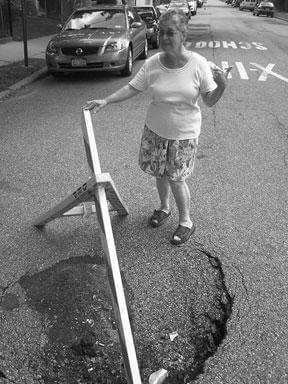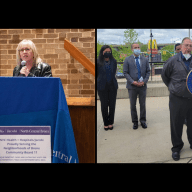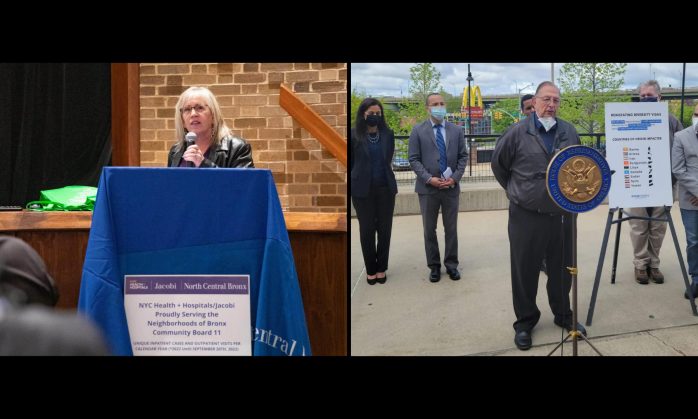Residents of Seymour Avenue between Waring and Mace avenues are once again calling on the city to do something about a longstanding problem grown more serious in the past three years.
While the Department of Environmental Protection and other agencies are working on the issue, residents say there are several large potholes or “sinkholes” on the block, causing problems with parking, traffic and pedestrian safety.
Community Board 11 member Sandra Unger lives on the block, and she said that even though DEP and Con Edison have put up barriers, cones, and metal plates to cover the sinkholes, more seem to be forming.
“There are at least five sinkholes in the street,” Unger said. “My neighbors are frustrated and upset. It makes it difficult for some of my neighbors to park in front of their homes.”
Unger said that her biggest concern is a major street cave in. She added the holes, which in the past few years grew to be as large as several feet deep, pose a problem for elderly and children.
The DEP conducted a study in 2007 that found an underground pipe had cracked and buckled, causing the sinkholes.
“One sidewall of the 13-foot-by-8-foot concrete sewer was found to be cracked and buckled for about 15 feet,” wrote Michael Krysko, a director of DEP’s Bureau of Water and Sewer Operations, in 2007. “The contractor will repair the sidewall internally […] Also, DEP will initiate a capital project to rehabilitate the sewer for the entire block.”
Angel Roman, DEP spokesman, said that the agency had replaced over 20 feet of pipe already on Waring Avenue between Seymour and Fish avenues. However, he added, that is the only area the agency is currently working on.
Joe McManus, a longtime CB 11 member, said that the problem on Seymour Avenue and the immediate area goes back at least 35 years, and that he anticipates DEP will soon work to resolve the problem.
“DEP is responding to the problem, and there is construction at the intersection of Waring and Seymour avenues, with plates covering much of the intersection,” McManus said. “They just kept filling in the holes with blacktop, which did not solve the problem. The surface of the street is only six to eight inches deep. Now the problem needs should be fixed on a deeper level.”
























